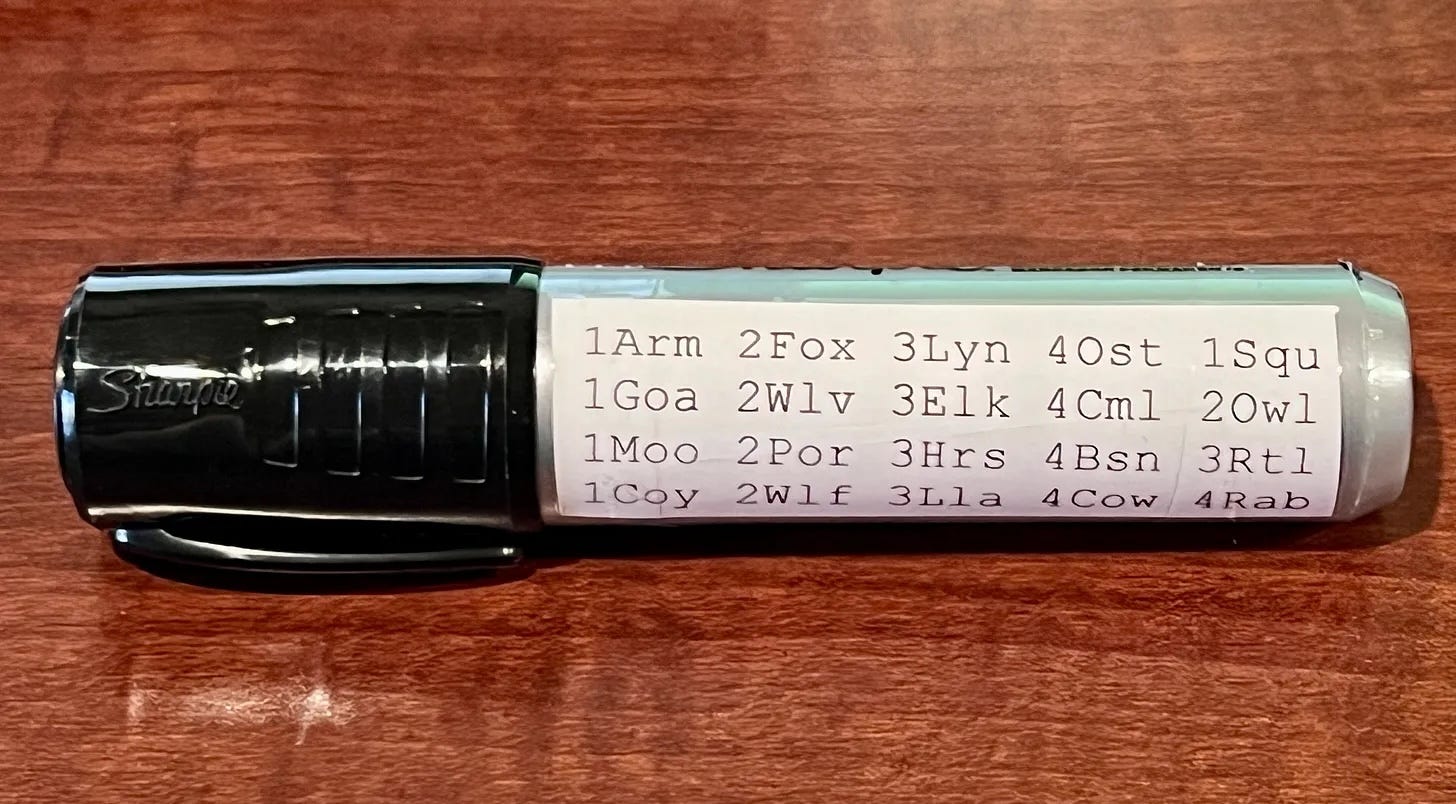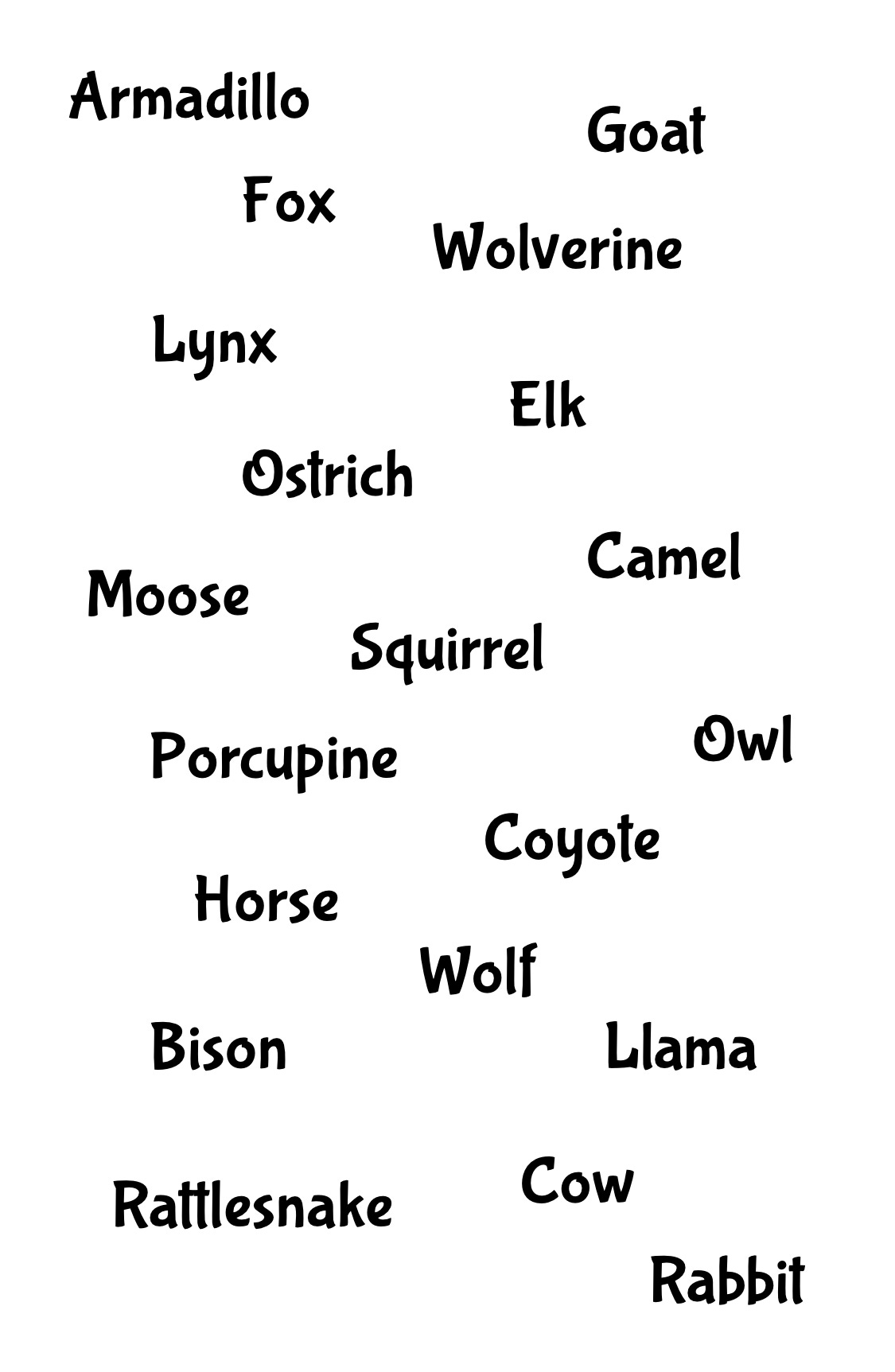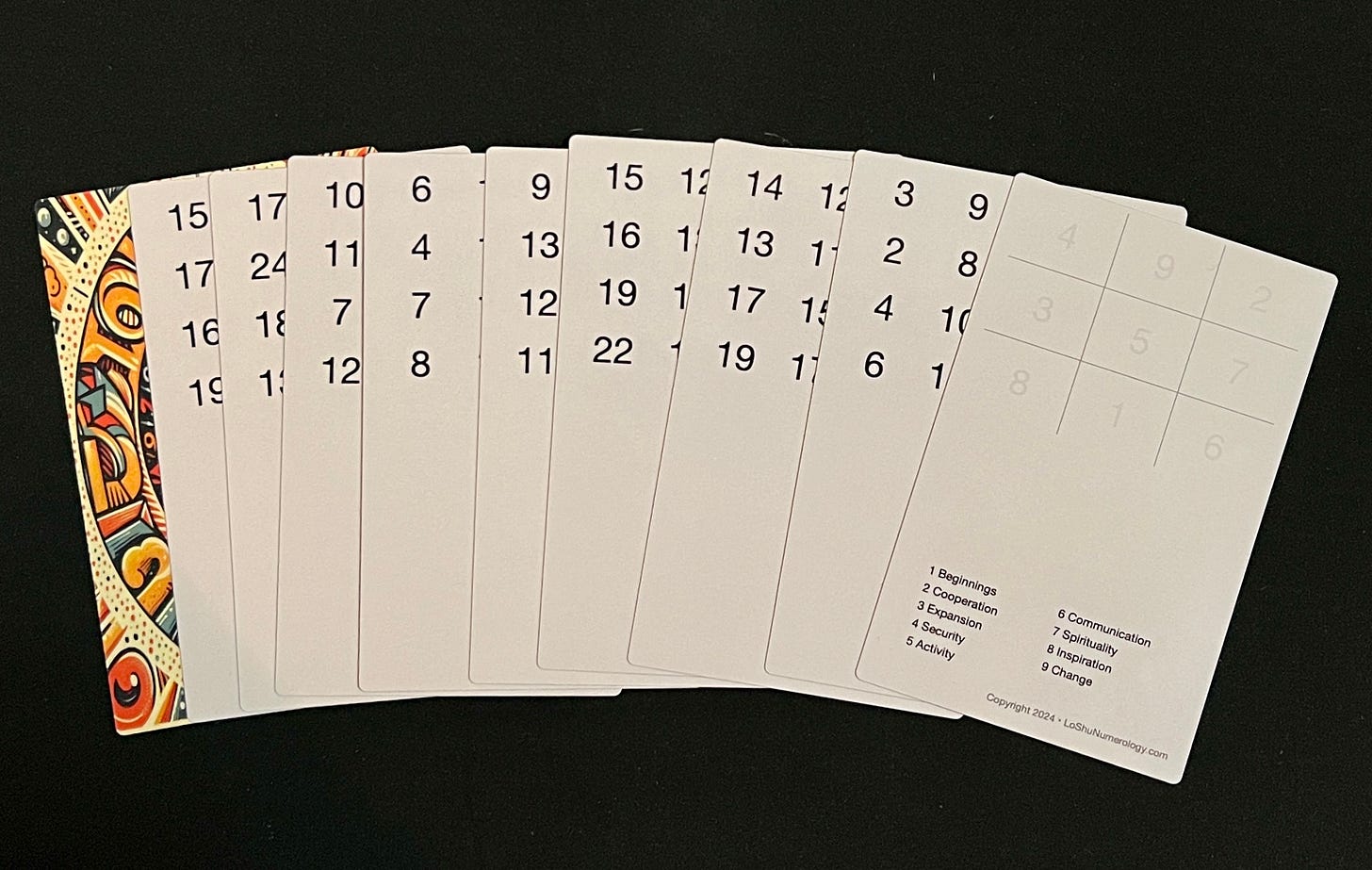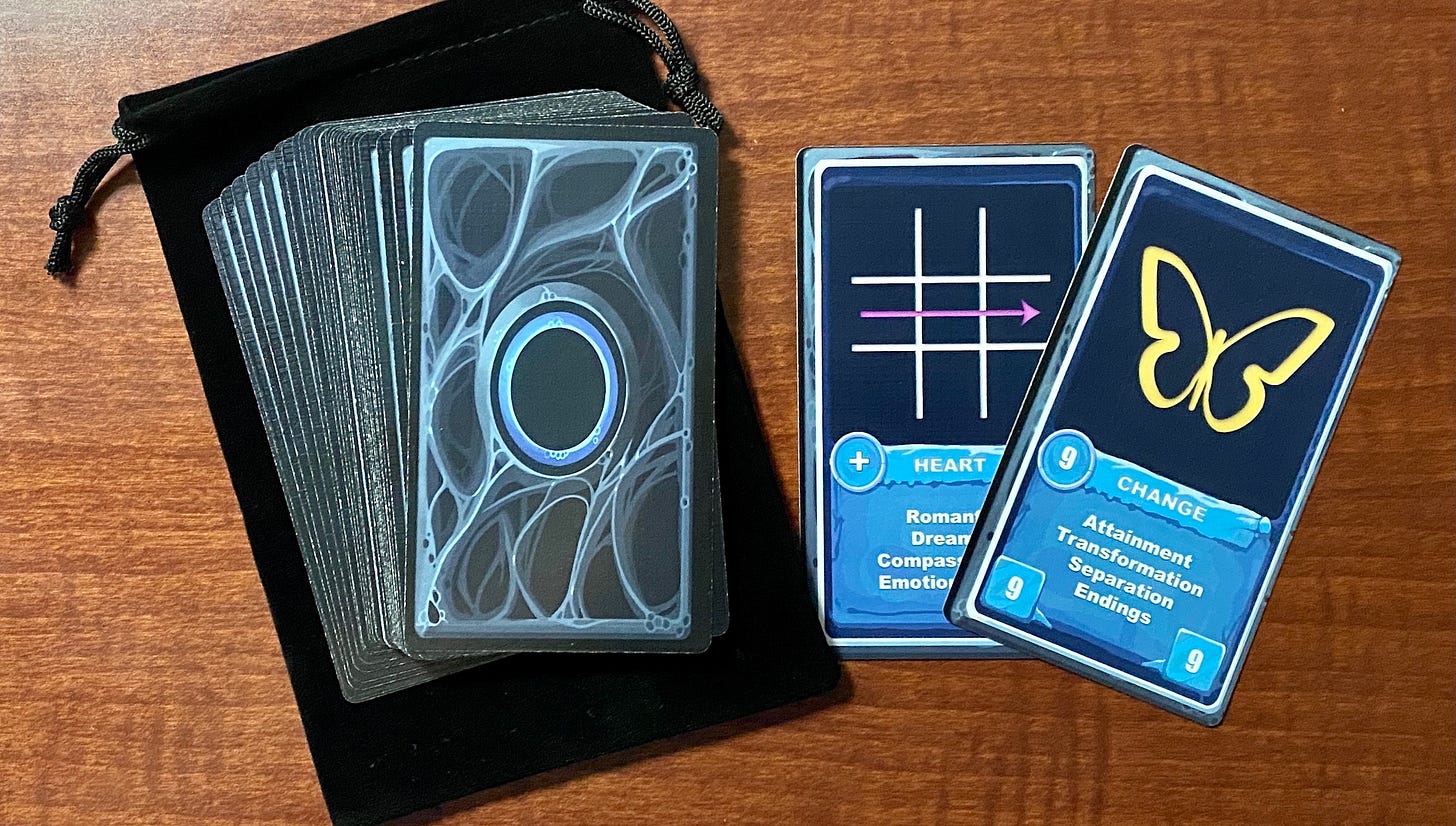Out in the Open; Part of the Effect
Another look at cribs...
This is kind of an addendum to the Spinning Marc Paul and Cribs articles to talk about the idea of cribs that aren’t hidden — they are right out in the open, although to the audience they don’t look like a cheat sheet.
The first part of this is especially pertinent for people who perform Marc Paul’s Emotions effect, from the Anywhere Act, but the ideas can be used elsewhere.
Emotions Becomes Carnivoracious
Because the theme of Emotions didn’t appeal to me, I dismissed it at first, but quickly realized the method could be used for a routine I’d come up with, but didn’t yet know how to do.
Instead of cards containing positive traits (Adventurous, Imaginative, Cheerful, etc.), I ended up with cards containing the names of animals my family had eaten in Alaska years ago. (It was the 1970s, we were very poor, lived in the middle of nowhere, and my parents liked the idea of living off the land as much as possible.)
The first crib I created for this used a paper taped on the barrel of a Magnum Sharpie. Then I could look right at it as I scribbled thoughts on a pad of paper.
The nice thing about writing down the thought you’re receiving is revealing it can be theatrically better than just saying, “You’re thinking of a wolverine, correct?” Even though I no longer rely on that crib, I still like to use a pad to reveal the thoughts, although at least one of them is often done on the fly, “I don’t even have to strain to get yours, your thoughts are so strong it’s almost like you’re shouting, squirrel!”
The New “Out in the Open” Crib
In Carnivoracious I mention twenty different animals that my family has eaten and turn the following card toward the audience, showing a list of those animals:
The actual size of the card is about 3.5” x 5.5” so too small to be read from beyond the first row (if that), but it’s obviously a list. When I hand out the other four cards to have helpers think of an animal, I just keep the master list at hand.
While the animals shown on that card look random, there’s a pattern I can see that allows me to mention the animals in the needed order. (I’m not explaining the method here — if you have Emotions, you know what I mean.) If I have a dry erase marker on me, I can even mark off animals as I call them — it’s a natural action. I’m crossing them off as I call them to make sure that I cover every animal on the list.
The crib is being held in my hand and referred to as a normal part of the effect. I don’t have to hide anything — it’s organic.
Let’s look at a few other examples of cribs that are not just in plain sight, but are often a real part of the effect.
Example: Site Seer
My effect Site Seer is one of 50 (50,000?) effects based on the Magic Age Cards principle (discovered hundreds of years ago). In the picture below, look at the card on the far right, Top 15 AZ Destinations:
That’s a list of tourist sites someone can select from, and after they’re thinking of one, that card is tossed aside onto the table (or handed back to me if it’s a standing situation).
That card is part of the effect but also the actual crib. It’s also never openly referred to again — as far as the helper and spectators are concerned, we can forget about it because it already served its purpose and has now been set aside.
But when it comes time for me to reveal the thought of destination, that card is right there when I can sneak a peek at it. (It’s also the same on the front and the back, so it can’t be set on the table such that I’d have to turn it over.)
Other Examples: Numerology Cribs
Another couple examples of “in the open” cribs come from the numerology-based effects/products I’ve created.
The first is a cross between a reading and a prediction, called NuMatrix. A helper circles four numbers in a selected grid and you give a short reading based on those numbers. Then you add those numbers together to find the final number that’s most important for them, and it matches the prediction you wrote down ahead of time, proving you really were able to read that person with accuracy.
Along with nine grid cards is included an extra card that can be used to give a complete Lo Shu numerology reading (if you really want to dive into readings that much) — and on the bottom of that card (on the far-right in the picture below) are listed the meanings of the digits 1 through 9.
That card can just be stacked on top of the cards that aren’t being used for the reading and a quick glance can remind you that 4 equals Security, or 7 equals Inspiration, and so on. This makes getting started very easy, and with the crib out in the open there’s nothing you have to memorize.
The other numerology based product with a built-in crib is the one I came up with first. It’s a deck of cards used to help with Lo Shu readings and I not only put the “major meaning” on the card, but I also included some related words that help you fill out the meaning of that number so you can easily give a more in-depth reading.
Since the cards are used as part of the reading, they are not just where you could glance at them, but they are front and center. You can actually be pointing at your crib and it’s not seen as sneaking a glance at something!
Summary
I have heard some performers denigrate the use of cribs, saying that a real professional would put in the time and effort to memorize the information they rely on. I get where they’re coming from, in part, but in general my response to that attitude is “f^#% off.”
Anything you can do to make your presentation better is fair game, and if having a crib available — whether you use it or not — settles you down and lets you concentrate on your performance? That’s all good.
And cribs that nobody knows are cribs? Even better. ;)









